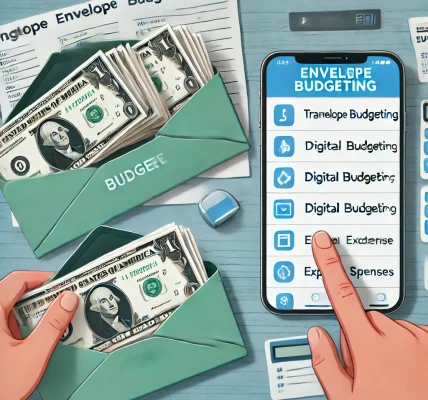📚 Introduction
Unexpected expenses can wreak havoc on your budget, pushing you towards unnecessary debt. Sinking funds provide a proactive way to save for predictable expenses, ensuring that you stay debt-free while managing future costs effortlessly.
By using sinking funds effectively, you:
✅ Plan for major expenses without impacting your monthly budget
✅ Avoid relying on credit cards or loans during emergencies
✅ Achieve financial stability with better money management
This guide will cover:
👉 What are sinking funds and how they work
👉 Steps to set up and manage sinking funds
👉 Best practices to stay financially prepared
The content will be SEO-friendly, audience engaging, and legally compliant to prevent any legal complications.
🎯 What Are Sinking Funds?
A sinking fund is a dedicated pool of money set aside to cover anticipated expenses that may occur irregularly. Unlike emergency funds that cater to unexpected situations, sinking funds are for planned future expenses.
📝 How Sinking Funds Work
- Identify Future Expenses: Determine predictable costs such as vacations, car repairs, insurance premiums, and home maintenance.
- Set a Savings Goal: Calculate how much money is needed and by when.
- Contribute Regularly: Deposit small amounts periodically until the target is met.
Example:
You know your car insurance premium of ₹12,000 is due in 12 months.
✅ To avoid a sudden financial burden, you save ₹1,000/month in a dedicated sinking fund.
📊 Benefits of Using Sinking Funds
✅ 1. Prevents Accumulating Debt
Sinking funds ensure that you don’t need to rely on credit cards or loans when large expenses arise.
✅ Pay in Cash: Cover major costs without interest payments.
✅ Stay Debt-Free: Avoid falling into a debt cycle.
✅ 2. Reduces Financial Stress
Planning ahead gives you peace of mind and keeps unexpected financial stress at bay.
✅ Predict and Prepare: Budget confidently for upcoming costs.
✅ Avoid Last-Minute Scramble: No need to dip into your emergency fund.
✅ 3. Improves Financial Discipline
Sinking funds help cultivate the habit of regular saving and ensure that you stay on track with your financial goals.
✅ Establish a Routine: Set aside a small amount each month.
✅ Align with Budgeting Goals: Integrate it into your monthly budget.
📝 Common Categories for Sinking Funds
Sinking funds can be used for any future expense that is predictable but not a part of your monthly budget.
🎁 1. Holiday and Gift Fund
Budget for birthdays, festivals, and holiday gifts.
✅ Avoid Year-End Panic
✅ Plan Holiday Expenses Without Stress
🚗 2. Car Maintenance and Repairs
Set aside money for annual vehicle servicing or unexpected repairs.
✅ Cover Repairs Without Stress
✅ Avoid High-Interest Car Loans
🏡 3. Home Repairs and Maintenance
Budget for home improvements, repairs, and property taxes.
✅ Handle Emergencies Smoothly
✅ Prevent Financial Disruption
📚 4. Education and Tuition Fees
Plan for school fees, extracurricular classes, or higher education expenses.
✅ Support Education Without Financial Strain
✅ Avoid Borrowing for Tuition
🏖️ 5. Vacation and Travel Fund
Save for planned vacations and family trips.
✅ Travel Without Debt
✅ Enjoy Stress-Free Holidays
📈 Step-by-Step Guide to Setting Up Sinking Funds
📝 Step 1: Identify Your Sinking Fund Categories
List out upcoming expenses that require a sinking fund.
✅ Examples: Car insurance, home repairs, holiday gifts, and vacations.
✅ Group Expenses: Group them by frequency (annual, semi-annual, or quarterly).
📝 Step 2: Set Savings Goals for Each Fund
Estimate the amount needed and the timeline for each expense.
✅ Formula: Monthly Contribution=Total Fund GoalNumber of Months\text{Monthly Contribution} = \frac{\text{Total Fund Goal}}{\text{Number of Months}}Monthly Contribution=Number of MonthsTotal Fund Goal
Example:
- Vacation Budget: ₹50,000
- Timeline: 10 months
- Monthly Contribution: ₹50,000 ÷ 10 = ₹5,000
📝 Step 3: Open Separate Accounts or Use Budgeting Apps
Consider keeping sinking funds separate to avoid accidental spending.
✅ Savings Accounts: Create multiple savings accounts for individual funds.
✅ Envelope System: Use cash envelopes for small, recurring expenses.
✅ Budgeting Apps: Track progress with apps like Money Manager, Goodbudget, or Walnut.
📝 Step 4: Automate Monthly Contributions
Set up automatic transfers from your primary account to your sinking fund accounts.
✅ Ensure Consistency: Avoid forgetting payments.
✅ Simplify Financial Planning: Stay on track with your goals.
📝 Step 5: Track Progress and Adjust as Needed
Regularly monitor your sinking funds to ensure that you’re meeting your savings goals.
✅ Review Every Quarter: Adjust contributions if necessary.
✅ Redirect Surplus Funds: Reallocate excess funds to other goals.
📊 How to Prioritize Sinking Funds
Not all sinking funds require the same level of urgency. Prioritize based on importance and timeline.
📝 1. High-Priority Sinking Funds
These are essential expenses that can cause financial stress if not funded.
✅ Examples: Car insurance, home repairs, and emergency medical expenses.
📝 2. Medium-Priority Sinking Funds
These are predictable but not urgent expenses.
✅ Examples: Travel, education, and technology upgrades.
📝 3. Low-Priority Sinking Funds
These funds cater to discretionary expenses that can be postponed if necessary.
✅ Examples: Entertainment, hobbies, and luxury purchases.
📝 Best Practices for Managing Sinking Funds
🔥 1. Name Each Fund for Clarity
Give your sinking funds unique names to distinguish between different goals.
✅ Examples: “Car Insurance Fund,” “Vacation Fund,” “School Fee Fund”
🔥 2. Regularly Re-evaluate Contribution Amounts
Periodically assess if your current contributions align with your expenses.
✅ Increase Contributions: If expenses are higher than anticipated.
✅ Decrease Contributions: If a fund has been overfunded.
🔥 3. Avoid Using Sinking Funds for Non-Designated Expenses
Stick to the purpose of each sinking fund to prevent financial gaps.
✅ Track Transactions Carefully
✅ Replenish Funds When Used
📉 Mistakes to Avoid When Using Sinking Funds
🚫 1. Forgetting to Track Progress
Failing to monitor your sinking funds can lead to unexpected shortfalls.
🚫 2. Overfunding Low-Priority Funds
Ensure that high-priority funds are fully funded before allocating excess to discretionary goals.
🚫 3. Neglecting to Adjust Fund Contributions
As your expenses change, update your contribution amounts accordingly.
📅 When to Start Using Sinking Funds
The best time to start a sinking fund is as early as possible. Whether you’re saving for an upcoming expense or planning for future goals, starting early allows you to:
✅ Spread Contributions Over Time
✅ Avoid Last-Minute Financial Stress
✅ Stay Debt-Free Even During Emergencies
🎁 Bonus: Sinking Fund Categories Checklist
✅ Insurance Premiums
✅ Car Repairs and Maintenance
✅ Home Renovations
✅ Education and Tuition Fees
✅ Travel and Vacation Expenses
✅ Medical and Healthcare Costs
✅ Festive and Gift Funds
📢 Conclusion: Stay Debt-Free with Strategic Sinking Funds
Sinking funds empower you to plan ahead and manage large, recurring expenses without falling into debt. By implementing a robust sinking fund system, you:
✅ Achieve Financial Stability Through Consistent Planning
✅ Stay Debt-Free During High-Cost Periods
✅ Meet Future Expenses Without Compromising Your Budget
Pro Tip: Start small with one or two sinking funds and gradually expand your categories to cover all foreseeable expenses. Consistency is key to long-term financial success! 💸💡



